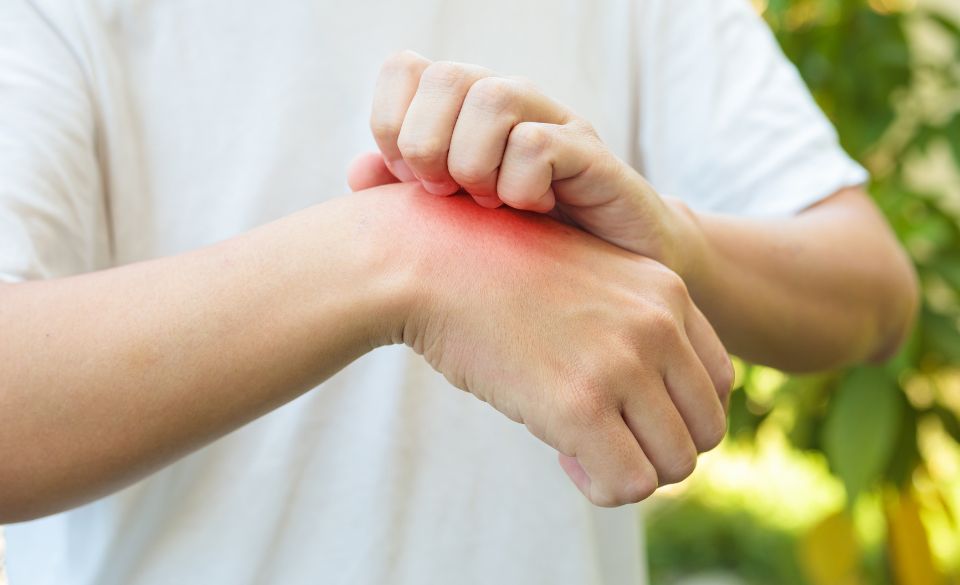
Exercise-Induced Urticaria: All You Should Know
Page Contents
If you’ve ever experienced an itchy or uncomfortable skin reaction after exercising, you might be dealing with a condition known as exercise-induced urticaria. Don’t fret – we’ve got your back with a comprehensive guide that sheds light on this unique phenomenon and offers insights into managing and understanding exercise-induced urticaria.
Unraveling the Mystery: What is Exercise-Induced Urticaria?
Imagine this: you’re in the middle of a vigorous workout, and suddenly, your skin starts itching and breaking out into hives. This perplexing reaction is exercise-induced urticaria in action. Also known as exercise-induced hives, this condition involves the development of hives, or raised, red, and itchy welts, on the skin during or after physical activity.
The Physiology Behind the Scenes: So, what’s cooking beneath the surface? When you exercise, your body temperature rises, and you start sweating. In some cases, this increase in body heat triggers an immune response that releases histamine and other chemicals into your bloodstream. These chemicals cause blood vessels to leak and the characteristic hives and itching to appear on your skin.
The Culprit: Histamine Release: Histamine is a natural compound that your immune system deploys during allergic reactions. It’s like a fire alarm that goes off when your body senses a threat, like pollen or certain foods. In exercise-induced urticaria, histamine is released in response to the heat generated during exercise, resulting in the classic skin reaction.
Studies on the Radar
Study #1: Journal of Allergy and Clinical Immunology
This study delved into the intriguing world of exercise-induced urticaria, exploring the factors that contribute to this condition. The research highlighted that exercise-induced urticaria can be triggered by various forms of physical activity, ranging from aerobic exercises to high-intensity workouts. It emphasized the role of histamine release and immune system involvement in the development of hives during exercise.
Study #2: Annals of Allergy, Asthma & Immunology
Ever wondered why some individuals are more prone to exercise-induced urticaria than others? This study provided some insights. It discussed the genetic predisposition to this condition and how factors like heat and sweat can trigger the immune response. The research also touched on the potential connection between exercise-induced urticaria and other allergic conditions, shedding light on the complexity of the body’s responses.
Study #3: Journal of Investigative Dermatology
This study went beyond the surface and investigated the mechanisms that lead to histamine release during exercise-induced urticaria. The findings suggested that physical exertion triggers mast cell activation, which then leads to the release of histamine and other inflammatory compounds. Understanding these underlying processes is a crucial step in developing effective management strategies.
Tackling Exercise-Induced Urticaria: What Can You Do?
Consult a Medical Professional: If you suspect you’re experiencing exercise-induced urticaria, it’s wise to consult a medical professional. They can accurately diagnose the condition and recommend appropriate steps based on your specific situation.
Identify Triggers: Pay attention to the circumstances surrounding your episodes of exercise-induced urticaria. Is it happening during specific activities, at certain temperatures, or in particular environments? Identifying triggers can help you modify your routine to minimize reactions.
Pre-Exercise Precautions: Engage in a thorough warm-up before exercising, as this can help reduce the intensity of the immune response. Additionally, consider taking antihistamines before workouts under the guidance of a healthcare provider.
Stay Hydrated: Adequate hydration can help regulate your body temperature and potentially reduce the risk of triggering exercise-induced urticaria.
Cool Down: After exercising, cool down gradually to allow your body to adjust to the temperature change and minimize the sudden release of histamine.
Consider Alternative Activities: If high-intensity exercises consistently trigger reactions, you might want to explore alternative activities like swimming or yoga, which generate less body heat.
Wrapping Up
Exercise-induced urticaria might add a twist to your workout routine, but armed with knowledge and guidance, you can manage and even prevent its unwelcome appearance. Remember, every individual’s journey with exercise-induced urticaria is unique, and finding strategies that work for you might involve a bit of trial and error. By staying informed, consulting professionals, and being proactive, you’re taking charge of your health and well-being, hives and all. So, itch less, move more, and embrace the joy of staying active, even in the face of exercise-induced urticaria!




